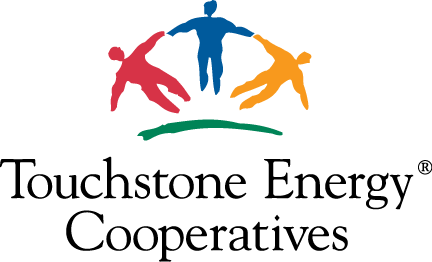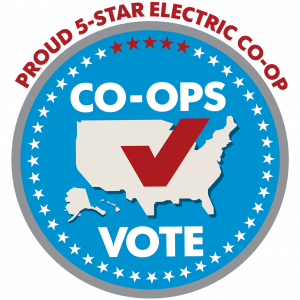Dwight Miller, CLCP, CUSP: Director, Safety Training and Loss Prevention
The small utility had just lost two journeymen linemen to contractors, and they needed replacements who could hit the ground running. So, the company held some interviews and hired two seasoned journeymen. Their character was perhaps a bit flawed, but the company needed warm bodies to cover on-call duty and begin immediately producing on the crew. Two weeks later, whispers began among workers about the new guys’ critical incompetence and poor attitudes. Two months later, the utility released them from their roles.
Gauging Qualifications Through Job Titles
With the current rate of turnover in the electric utility industry, stories like this fictitious one have become all too real. Often overlooked by the hiring manager, one of the biggest challenges we face is assessing a candidate’s job title – especially the title “journeyman lineman.” What comes to your mind when you hear that title? Whatever popped into your brain just now is likely somewhat different than what popped into the brains of other individuals reading this, and therein lies the point: Expectations for a journeyman lineman are different wherever you go because the type of work involved at each company is different.
Job titles are good, and even a must, when they are well-defined within one organization. But when similar job titles are used among dissimilar companies for employment purposes or even mutual-aid assistance, that’s where danger can lurk. Over and over, I have seen hiring managers gauge the competence of a candidate against their own workers who have the same title. The title “journeyman lineman” has led to many workers being hired – or received for mutual aid – and then asked to perform work they’re not qualified for. Why? Because our assumption is that a journeyman lineman is qualified for every task that our own lineworkers are asked to perform. While that could be true, it’s unlikely.
OSHA doesn’t use job titles to determine qualifications because titles are different everywhere, and the same job title can mean different things. The only thing that matters to OSHA is if a worker has been properly trained and has demonstrated proficiency in the work practices assigned to them.
I’m aware of a contractor journeyman lineman who had never performed work inside of a substation. He was hired by a utility that has their lineworkers perform small substation tasks. After a couple weeks on the job, the contractor journeyman was sent to a substation to perform a task that he had no understanding of – but he said nothing. Wanting to prove his worth and meet expectations, he walked into the substation determined to figure things out and ended up locking out a circuit. That’s an issue of epic proportion.
Since qualification is directly tied to specific training and experience alone, this means that a fourth-year apprentice lineman could actually exceed the qualifications of a 12-year journeyman in certain tasks (e.g., live-line underground switching, substations and controls, troubleshooting). It is totally dependent upon what they have been trained for and the tasks they have been performing.
However, the most important thing to consider may be the individual’s past environment – that is, discovering the truth about the safety culture where they came from. Have they been doing their job right or were they taking shortcuts? Every experience is different, and we must be diligent to ensure we do not bring new workers into our organization who will weaken our culture with unsafe work practices.
Again, all workers must be trained and demonstrate proficiency in whatever duties they are expected to perform. If a worker with previous training and/or experience is hired, OSHA requires that worker to demonstrate proficiency to the new company in every task they will be asked to perform before setting them loose. The agency even offers a three-step process in Note 2 to 29 CFR 1910.269(a)(2)(viii) that can be used to determine such proficiency. What process are you using?
Gauging Human Error Margins
I believe that a worker’s margin for human error is a product of two different components: hazards introduced at the job site combined with the work practices employed.
This margin can become dangerously low if key individuals in the organization lack a complete understanding of the hazards our workers face, and/or if we engage in work practices that do not align with company safety policy. Therefore, we should be gauging the difference between actual hazards and perceived hazards in our organization, as well as any gaps between work practices and safety policy, also known as “drift.” A gap in either one of these areas can produce a perilous perception of an acceptable margin for human error.
While it’s natural for management to gauge the effectiveness of a safety program based on a lack of incidents, that is a dangerous viewpoint that can lead to disaster. Equally dangerous is a culture in which workers pick and choose when to follow the rules. How many times do we see a reactive company with a weak safety culture do the following two things after an incident: (1) add a new rule to the safety policy and (2) consider firing the worker involved in the incident? To be clear, the issue is not the rules themselves; it’s how often management fails to hold workers accountable for not adhering to those rules. Many people will take shortcuts if they know they won’t be held accountable.
As safety professionals, shouldn’t we serve as advocates to ensure management and field workers have a solid understanding of the threats faced by employees? Consider this example: If senior staff were making a major decision on an important piece of equipment without a clear understanding of related hazards, their decision would probably be based mostly on cost, right? And if a line crew has overlooked a major hazard on the job due to a poor job briefing, we also know that work practices will likely be compromised. When misunderstood hazards combine with unsafe work practices, there is no greater indicator that tragedy is around the corner.
Gauging Overall Safety Performance
As noted earlier, a natural way to gauge safety performance is to look at the number of past injuries. But is performance best measured by the absence of injuries or by the presence of safety?
Injury rates do have their place – trends should be analyzed and areas that need improvement should be identified. Why is it critical, however, that we do not make these rates our primary focus? Because they measure failure, and they tend to invoke negative reactions and place blame on people.
Our safety programs should be proactive, and safety success should be gauged accordingly. Let’s focus on improving organizational culture, rather than pointing out the failures of our workers. We should also encourage incident reporting and create a positive environment around safety.
Most importantly, isn’t risk management really all about gauging the distance our workers stay from the edge of the cliff? Injury rates tell us very little to nothing about that.
Over the last several years, we have enjoyed watching injury rates steadily decline while a dark truth has surfaced in our industry and others: Serious injury and fatality rates remain steady, which implies that it’s going to take a different set of key performance indicators to produce the information needed to predict potentially serious injuries and fatalities. This new viewpoint should revolve around three key components: employee engagement, open communication, and leadership attention. All of these components are necessary to build a high-trust environment in which workers feel free to openly discuss incidents, human errors, and the challenges they face. If we are going to strive to be the best, there is no greater gauge than this. The presence of safety should include assessments of our risk mitigation, the skill and knowledge of our workers, safety communications, safety improvement planning and overall safety culture.
As of press time, electric cooperatives across the nation are in phase two of the National Rural Electric Cooperative Association’s “Commitment to Zero Contacts” initiative, in which lineworkers are asked to honestly complete a survey that focuses on critical work practices, such as grounding, cover-up, and rubber gloving. The survey results will be revealed by a facilitator to the crew leaders in a closed-door session, during which they will work together to understand exactly what is happening in the field, agree upon certain areas of focus, and build a detailed plan that the crew leaders will then own.
Until leaders are willing to lay down ego in an effort to identify blind spots, “What were they thinking?” will continue to be a common question following an incident.





